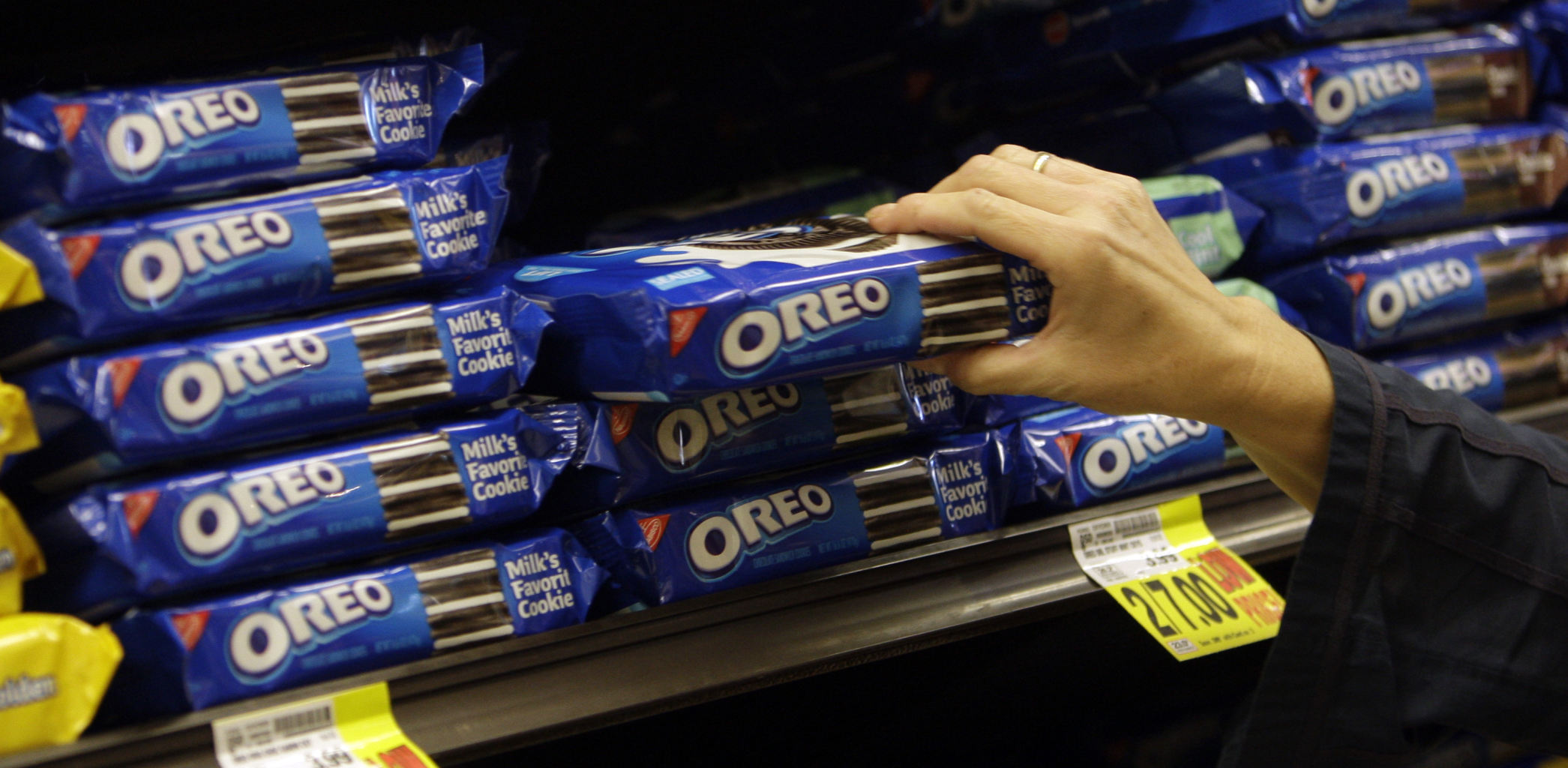
Those cookie crumbs clinging to the corners of little Timmy's mouth may be the telltale sign of a full-blown addiction -- especially if they're Oreo crumbs.
According to a study from students and professors at Connecticut College, lab rats find Oreo cookies to be as addictive as cocaine.
"Our research supports the theory that high-fat/high-sugar foods stimulate the brain in the same way that drugs do," said Joseph Schroeder, associate professor of Neuroscience at Connecticut College.
Neuroscience major Jamie Honohan was interested in taking a look at how high-fat, high-sugar foods contributed to the obesity epidemic in low-income areas. And when you're looking for high-fat, high-sugar foods, what could be better than an Oreo? Honohan adds that Oreos are "highly palatable to rats," which means we can all start ditching the cheese in our traps.
To test the addictive powers of Oreos, the rats were run through a maze. On one end of the maze, the rats were offered Oreos, on the other, rice cakes. Another test group was given an injection of cocaine or morphine on one side, and a shot of saline on the other. It seems that the rats spent just as much extra time hanging out on the Oreo side of the maze as the other mice did on the cocaine side.
"And just like most humans, rats go for the middle first," reads Connecticut College's own coverage of the study.
Cookies of any sort are, understandably, already considered one of the most addictive foods. According to Prevention, the other most addictive foods include white bread, donuts, pasta and chips. A single serving of Oreos is generally considered to be around three cookies, which delivers 14 grams of sugar and seven grams of fat.
Oreo is owned by Mondelez International's (MDLZ) Nabisco subsidiary, a billion-dollar business that also churns out Chips Ahoy cookies and Ritz crackers. The odds that anybody will be shocked by the fact that lab mice, and people too, would prefer cookies over rice cakes isn't likely to hurt the stock. Shares of Mondelez have risen 14.6% for the year-to-date.
According to a study from students and professors at Connecticut College, lab rats find Oreo cookies to be as addictive as cocaine.
"Our research supports the theory that high-fat/high-sugar foods stimulate the brain in the same way that drugs do," said Joseph Schroeder, associate professor of Neuroscience at Connecticut College.
Neuroscience major Jamie Honohan was interested in taking a look at how high-fat, high-sugar foods contributed to the obesity epidemic in low-income areas. And when you're looking for high-fat, high-sugar foods, what could be better than an Oreo? Honohan adds that Oreos are "highly palatable to rats," which means we can all start ditching the cheese in our traps.
To test the addictive powers of Oreos, the rats were run through a maze. On one end of the maze, the rats were offered Oreos, on the other, rice cakes. Another test group was given an injection of cocaine or morphine on one side, and a shot of saline on the other. It seems that the rats spent just as much extra time hanging out on the Oreo side of the maze as the other mice did on the cocaine side.
"And just like most humans, rats go for the middle first," reads Connecticut College's own coverage of the study.
Cookies of any sort are, understandably, already considered one of the most addictive foods. According to Prevention, the other most addictive foods include white bread, donuts, pasta and chips. A single serving of Oreos is generally considered to be around three cookies, which delivers 14 grams of sugar and seven grams of fat.
Oreo is owned by Mondelez International's (MDLZ) Nabisco subsidiary, a billion-dollar business that also churns out Chips Ahoy cookies and Ritz crackers. The odds that anybody will be shocked by the fact that lab mice, and people too, would prefer cookies over rice cakes isn't likely to hurt the stock. Shares of Mondelez have risen 14.6% for the year-to-date.
Apache





Comment